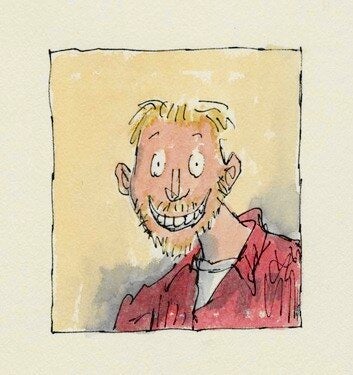A campaign launched by Time to Change in Spring of this year aims to get rid of "headclutcher" pictures in articles about mental health. The campaign was started as a response to the wealth of images accompanying articles about mental illness which have someone sat with their head in their hands, as highlighted by twitter users with the #headclutcher hashtag.
It's a challenge to represent emotions that are often private in a way that can be understood quickly, but the photos of people with their head in their hands tend to be stereotypical and fairly hopeless. They also make it seem like it's easy to spot someone who is really distressed, when actually we know that isn't the case. If it were then it would be much easier to offer help to people who need it, but who aren't necessarily showing this in any obvious way.
I asked comedian Jo Brand, who used to be a psychiatric nurse, what she thought about the headclutcher campaign. She said: 'I have always thought that portrayals of individuals with mental health issues in the popular press are really inappropriate. Either you get the terrifying, out of control, wild eyed maniac or someone that looks like a pauper out of a Dickens novel who has their head in their hands in a darkened room with the curtains drawn."
Brand agreed with the importance of showing mental health in a more 'normal' way: "I think it is absolutely essential that mental health issues are portrayed by people who look completely ordinary, because it is something that happens to ordinary people. It has to be said that many library photos used in newspapers of 'families', 'schoolchildren', or 'workers' are somewhat ridiculous, but portrayals of those suffering from poor mental health are always at the more bizarre end of the spectrum. In this day and age, one might have hoped we'd have moved on a bit."
What should we be using instead? The campaign has come up with a whole stockpile of photos that journalists can download for free. But the campaign made me think of an image by Quentin Blake, from a brilliant book I've used a lot with children and young people in my clinical psychology job.

Image from AP Watt at United Agents on behalf of Quentin Blake
Michael Rosen's Sad Book describes feelings of deep sadness with beautiful simplicity. One image which often resonates with young people I have worked with illustrates the contrast between how we might look on the outside and how we feel inside.
The picture is accompanied by the text "This is me being sad. Maybe you think I'm being happy in this picture. Really I'm being sad but pretending I'm being happy."
How often have any of us said "I'm fine" and put a brave face on things when we're not really? Feeling sad often makes us withdraw or lash out at others just when we need them most. I hope the headclutcher campaign makes us think about how we represent mental health in the media, but I also hope it helps us think about how we show other people what we are feeling, and how much we presume that what other people are showing us is the full story.